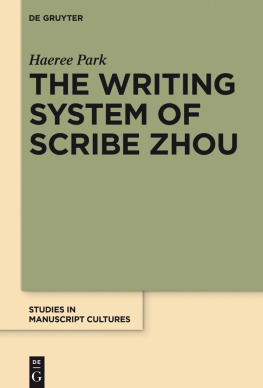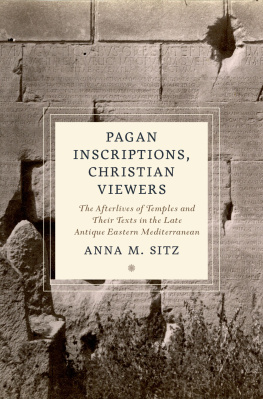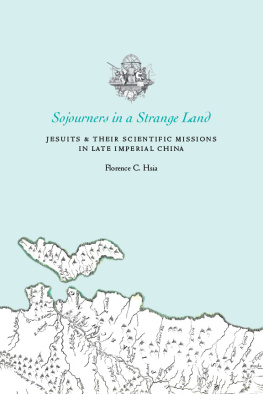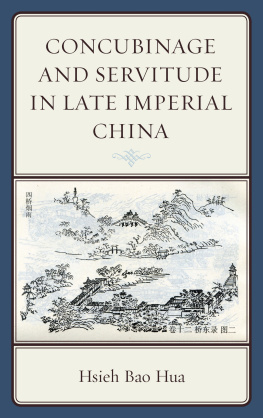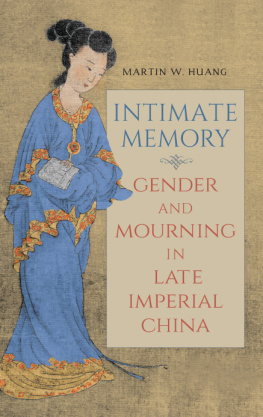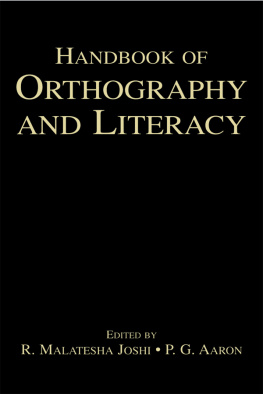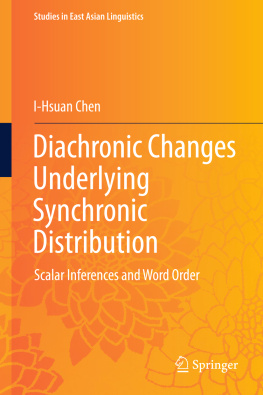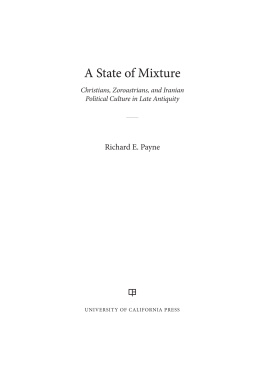Guide

Haeree Park
The Writing System of Scribe Zhou
Studies in Manuscript Cultures

Edited by
Michael Friedrich
Harunaga Isaacson
Jrg B. Quenzer
Volume 4

This book project was supported by an Alexander von Humboldt Fellowship (Summer 2011, Summer 2012 Fall 2013), DFG-Forschergruppe 963 Manuscript Cultures in Asia and Africa (Fall 2009), DFG-Sonderforschungsbereich 950 Manuscript Cultures in Asia, Africa and Europe (Winter 2013), for all of which the author is very grateful.
ISBN 978-3-11-044944-0
e-ISBN (PDF) 978-3-11-045930-2
e-ISBN (EPUB) 978-3-11-045931-9

This work is licensed under the Creative Commons Attribution-NonCommercial-NoDerivs 3.0 License. For details go to http://creativecommons.org/licenses/by-nc-nd/3.0/.
Library of Congress Cataloging-in-Publication Data
A CIP catalog record for this book has been applied for at the Library of Congress.
Bibliographic information published by the Deutsche Nationalbibliothek
The Deutsche Nationalbibliothek lists this publication in the Deutsche Nationalbibliografie; detailed bibliographic data are available on the Internet at http://dnb.dnb.de.
2016 Haeree Park, published by Walter de Gruyter GmbH, Berlin/Boston.
The book is published with open access at degruyter.com.
www.degruyter.com

In loving memory of my father Park Nung-chul
Acknowledgements
I would like to express my sincere appreciation to the Department of Asian Languages and Literature, University of Washington, Seattle, for their long-term support, especially to Professors Anne Yue-Hashimoto, David Knechtges and Zev Handel, and to the late Professor Jerry Norman. I owe a special debt of gratitude to Professor Michael Friedrich of the University of Hamburg and Director of the Center for the Study of Manuscript Cultures for his many critical comments on drafts of this book and for his constant support of my work generally. I am also grateful to Professor Matthias Richter at the University of Colorado, Boulder, for his many useful suggestions and critical comments, and to my senior colleagues in the field of Chinese historical linguistics, Professors Wolfgang Behr at the University of Zurich, William H. Baxter at the University of Michigan, Ann Arbor, and Laurent Sagart at the Center de Recherches Linguistiques sur lAsie Orientale, EHESS, Paris for their encouragement and kind support throughout my graduate and post-doctoral career. I am greatly indebted to my teacher Professor William G. Boltz who supported and guided me with his vast knowledge and keen insight through the planning and completion of this book. I am thankful to Deng Lin from Seattle and Thies Staack from Hamburg, who were always there as good friends and knowledgeable colleagues.
Symbols and Abbreviations
| CWZ | Chu Wenzi bian (Li Shoukui 2003) |
| EP | equivalent phonophoric |
| GD | Guodian Chumu Zhujian (Jingmenshi Bowuguan 1998) |
| Cheng | Cheng zhi wen zhi |
| Liu | Liu de |
| Lu | Lu Mu Gong wen Zi Si |
| LZ-A, B, C | Laozi jia , yi , bing |
| Qiong | Qiong da yi shi |
| Tang | Tang Yu zhi dao |
| Tai | Tai yi sheng shui |
| Wu | Wuxing |
| Xing | Xing zi ming chu |
| Yu-1, 2, 3, 4 | Yu cong yi , er , san , si |
| Zhong | Zhong xin zhi dao |
| Zi | Ziyi |
| Zun | Zun de yi |
E.g., (Cheng 12) means strip number 12 of the Cheng zhi wen zhi manuscript in the Guodian Chumu zhujian .
| Fuyang Zhouyi | The Zhouyi manuscript in Fuyang Hanjian Zhouyi Yanjiu by Han Ziqiang (2004) |
| GSR (# no.) | Grammata Serica Recensa phonophoric series number (Karlgren 1957) |
| Hex. (no.) | hexagram chapter number in the Zhouyi |
| Houma Mengshu | Houma Mengshu by Shandong sheng wenwu gongzuo weiyuanhui (1976) |
| JC (no.) | Yin Zhou Jinwen Jicheng (1984-1994) inscription number |
| Jiagu wen bian | Jiagu wen bian by Zhongguo kexueyuan kaogu yanjiusuo (1965) |
| Jingdian Shiwen | Jingdian Shiwen by Lu Deming (CE 6 th century), reprint 1985 |
| JWB | Jinwen bian (Rong Geng 1985) |
| Mao (no.) | Shijing poem sequence in Maoshi Zhengyi by Mao Heng (Han dynasty), Zheng Xuan (Han dynasty), and Kong Yingda (Tang dynasty) in Shisanjing Zhushu by Ruan Yuan (Qing dynasty); reprint, Li Xueqin et al. ed., 2000. |
| MC | Middle Chinese |
| MWD | Mawangdui Zhouyi manuscript in Ma Chengyuan ed. 2003, 216-250, and Zhang Zhenglang, 1984. |
| MWX (no.) | Shang Zhou Qingtongqi Mingwen xuan (1987-1990, Ma Chengyuan ed.) inscription number |
| OBI | Oracle Bone Inscription (= jiaguwen ) |
| OC | Old Chinese |
| Ph | phonophoric = phonetic component |
| QS | Qin Seal script form (= Small Seal script) in Shuowen Jiezi |
| R | Received version as in Zhouyi Zhengyi by Wang Bi (Wei dynasty) and Kong Yingda (Tang dynasty) in Shisanjing Zhushu by Ruan Yuan (Qing dynasty); reprint, Li Xueqin et al. ed., 2000. |
| S | signific = semantic component |
| S.A. | Spring and Autumn period (771-481 BCE) |
| SHD | Shuihudi manuscripts ( Shuihudi Zhujian , Shuihudi Qin mu zhujian zhengli xiaozu, 1990, Beijing: Wenwu), Shuihudi Qin jian Wenzi bian (Zhang Shouzhong 1994) |
| Shisanjing Zhushu | Shisanjing Zhushu by Ruan Yuan (Qing dynasty); reprint, Li Xueqin et al. ed., 2000. |
| SP | Signific-Phonophoric compound character |
| SS | synonymous signific |
| str. (no.) | strip serial number of a manuscript as arranged in the primary publication |
| SHZY | Shanghai Museum Zhouyi manuscript in Ma Chengyuan ed., 2003,11-70 and 131-260. |
| W.S. | Warring States period (481-221 BCE) |
| W. Zhou | Western Zhou period (1045-771 BCE) |
| x | Undeciphered character or the character at issue marked as an undeciphered character for the p |
1Introduction
1.1Goal of the study
When a bamboo-strip manuscript from the Warring States period finds a closely matching received text, the textual variants between the two versions consist in graphic variants in the majority of cases: they are pairs of character forms in matching textual positions identified as standing for the same words while differing with each other in graphic shape or in the graphic elements contained in them. In the latter case, the judgment that they stand for the same word despite differences in their character structure is based on the fact that they exhibit some sort of phonological relation. And this relation is indicated by (a) the two characters share a graphic component that apparently plays a phonetic role while they have different semantic components conventionally referred to as classifiers, or one of the two lacks a second component altogether; (b) the two characters have distinct phonetic components and yet the words that they normally stand for, when they are read as their structurally coincident characters in the received orthography, are phonetically similar. When the whole character in a manuscript does not find a structurally compatible form in the received script, its apparent phonetic component alone is compared with the matching received counterpart. The status of phonetic compatibility is the same whether a part or whole of a manuscript character is compared since words that share the same phonetic component are presumed to have similar pronunciations.

